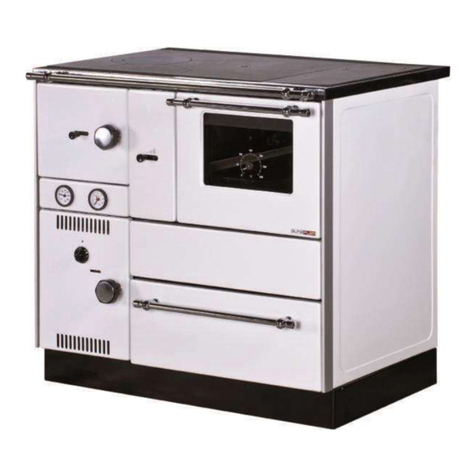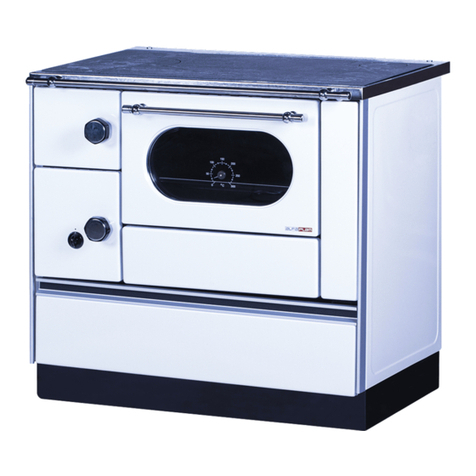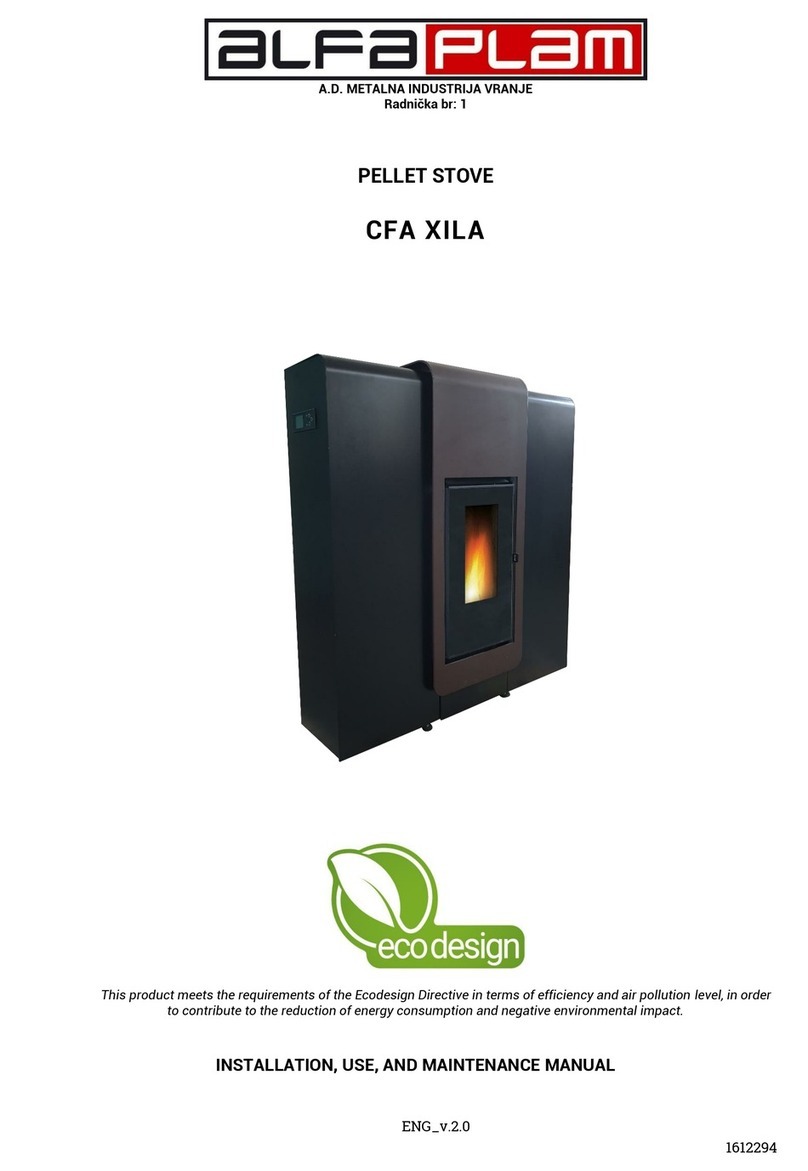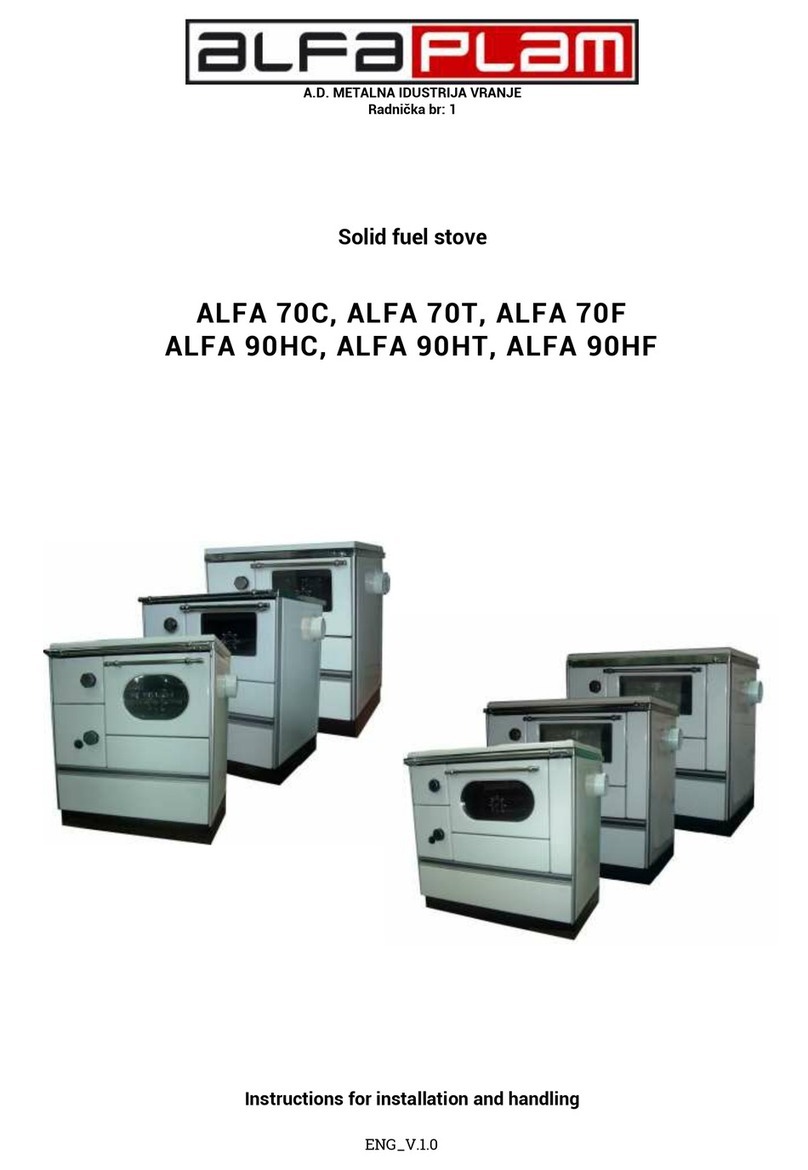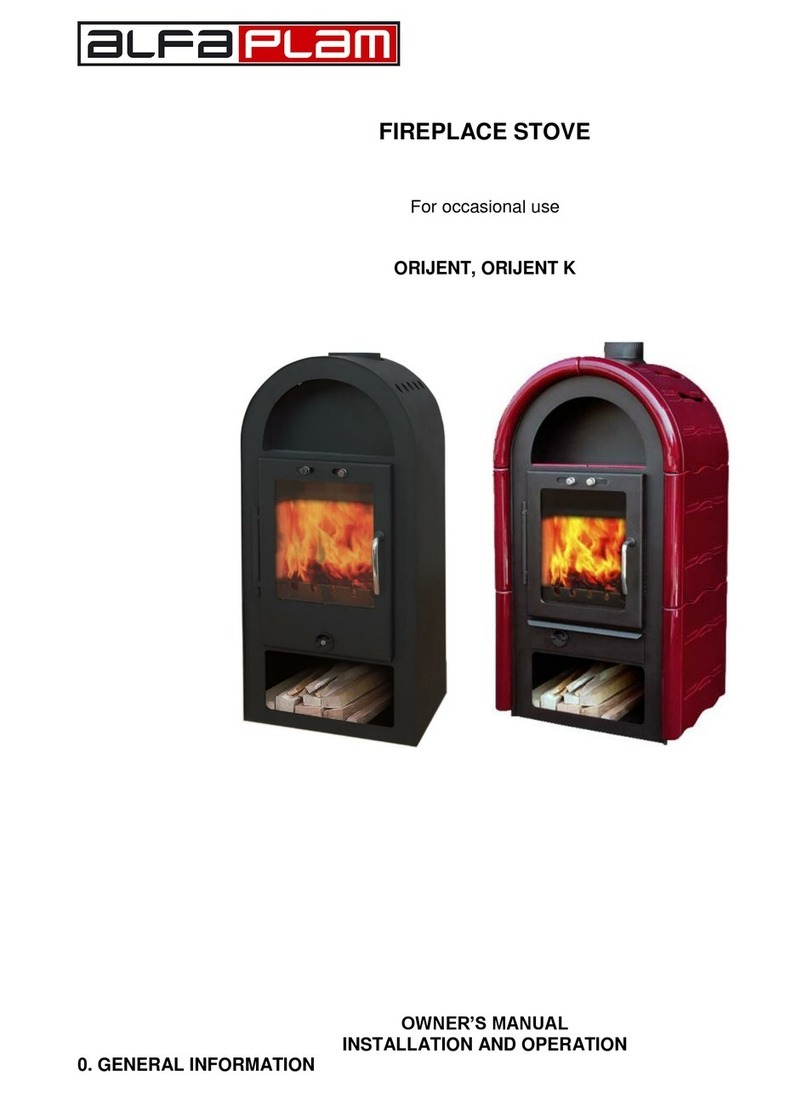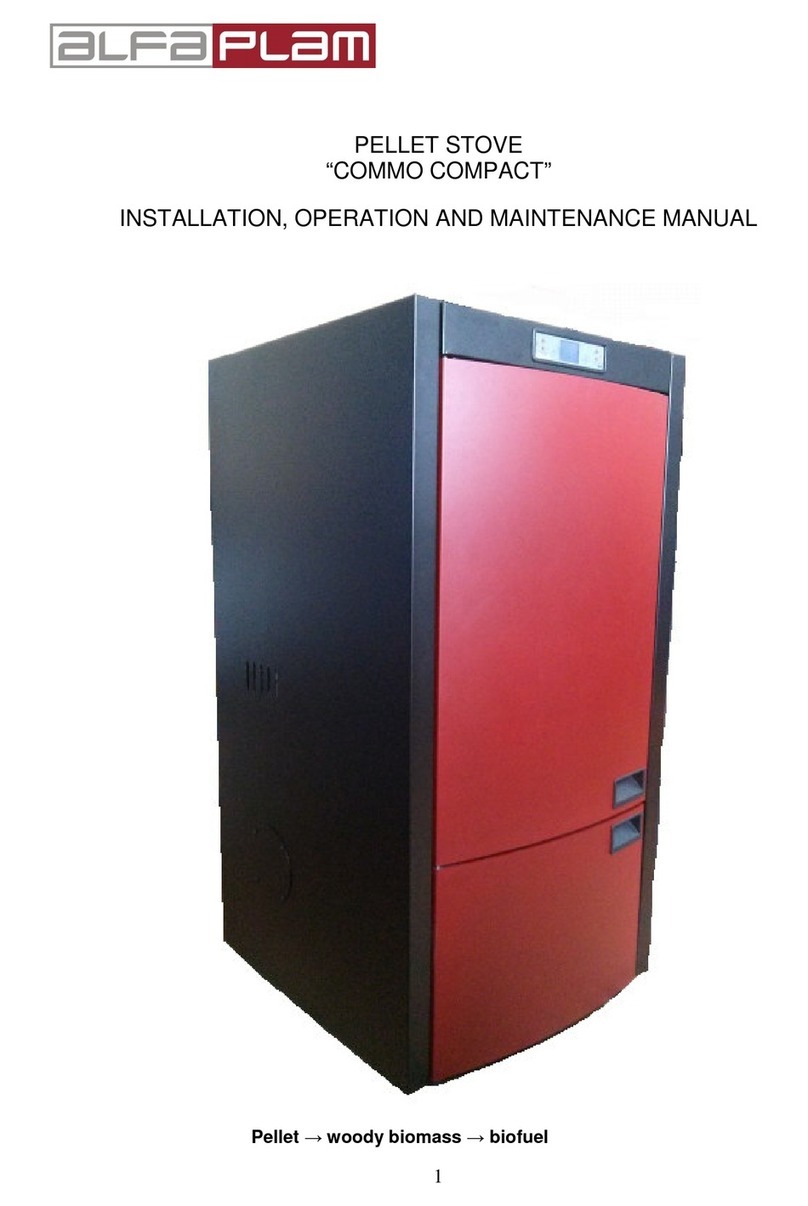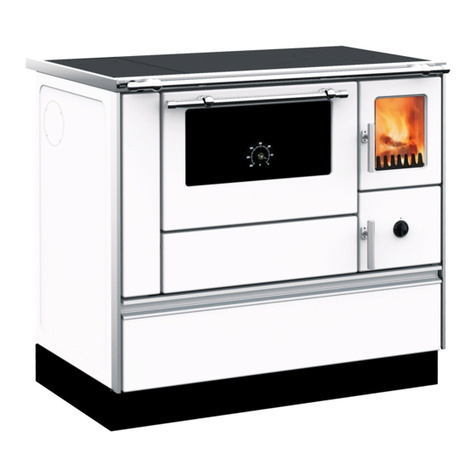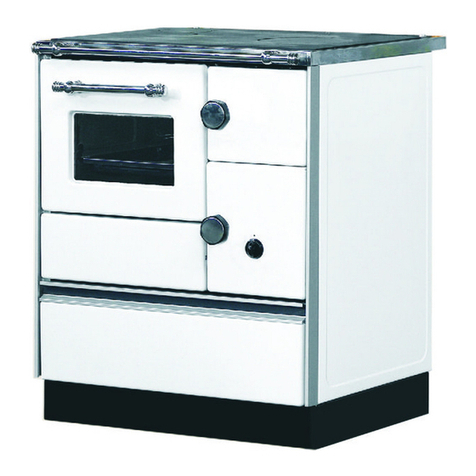
4
Attention: Do not store easily flammable materials such as paper etc. in that space. Pay attention to the height when
filling.
STOVE COMMISSIONING
Prior to the first stoking, all enameled surfaces should be cleaned with a soft dry towel, in order to prevent creation of
stains.
After becoming familiar with the handling of the stove, the first commissioning can take place. During the first stoking,
open the window since the applied corrosion protection in a short time develops an unpleasant however insignificant smoke,
that is, an unpleasant smell is created. This is normal and it disappears after a short time. Consider that some built-in parts
of the stove (pipe for waste gases, door for filling etc.), when it is kindled, may be hot and represent danger of burns. Special
attention should be paid to little children, so that no danger occurs.
At the first stoking, stoke the stove for two or three low fires in order to prevent cracking of the fireclay.
STOKING
*Pull out the heating flap knob, the heating flap is open.
*Open the primary air regulator at the highest level of air release ( figure 3, position 9 )
*Open the firebox door
*Insert wood wool, sawdust or paper
*Over this, put 2-3 small wood pieces
*Ignite
*Close the door of the firebox
*Let the wood burn lively
*Press in the heating flab knob, the heating flap is closed.
Upon creating the basic ember, you need to add fuel in the opening for filling.
Position the air regulator on the appropriate marked position (put the knob in position 1-3).
When adding fuel, slightly open the door of the firebox without pulling out flue gases, in this manner you will avoid having
flue gases in the room.
The rated heating capacity is achieved when you put the next fuel quantity and you adjust:
Adjusting the primary air
Make sure than you never put more wood or briquettes than what is really required for the rated capacity of heating.
The above indicated fuel quantity must not be exceeded because this may cause overheating of the stove.
Only natural dry wood or brown coal briquettes may be used according to the regulations on emission protection. The
wood being used must be dry (humidity residual, 20%). This is usually the case when wood is stored for two years in a dry
spot where there is good ventilation. Wet wood has low calorific value and causes soot deposits in the flue channels and in
the flue. Wood with treated upper surface (coated, painted, veneered and impregnated), plywood, waste of any kind (waste
from packaging), plastics, paper, rubber, leather, textile etc. must not be stoked.
The combustion of such materials pollutes the environment and it is prohibited by law. Besides this, damages of the flue
may also occur. In this case, all kinds of guarantee by the manufacturer cease. Unfavorable conditions and insufficient
draught in the flue my cause obstructions so the flue gases are not entirely taken away. In this case you should create
draught as a decoy in the flue. If this measure does not create draught in the flue, than it is not allowed to use the stove for
safety reasons.
Note: Better usability of fuel, thereby better heating of space is established by slightly or completely opening the oven
door.
COOKING
CO OKING D UR ING SU MME R
During warm days, the stove on solid fuel is used mainly for cooking. The oven door is kept closed. The best is to use a
pot with a heavy bottom and a corresponding cover.
COOK IN G DURIN G WIN TER
During cold days, the solid fuel stove is used mostly for heating of rooms. In order to cook faster, use dry woods.
The heating flap must be closed and the air regulation must be maximally open.
After you finish cooking, you should put the air regulator in a position denoted for rated heat capacity.
BAKING COOKIES AND BAKING PASTRY
For baking cookies and baking pastry, evenly distributed heat is required.
In order to achieve this evenness and sufficiently high temperature, the oven must be closed with a closed heating flap,
depending on what is being baked, the oven must be heated in advance. It the stove has heated up to the desired
temperature, but what you plan to bake inside the oven. Do not let creation of very strong ember, you should rather frequently
add fuel in small quantities.
Put high baking molds in the lower groove of the oven. You should bake all cookies with such shape on a moderate
temperature. For flat cookies or pastry, both grooves may be used. During this, we recommend slightly higher oven
temperature.

